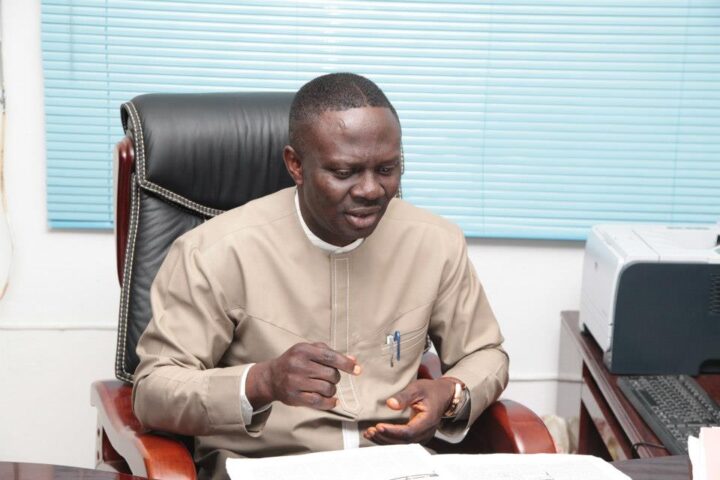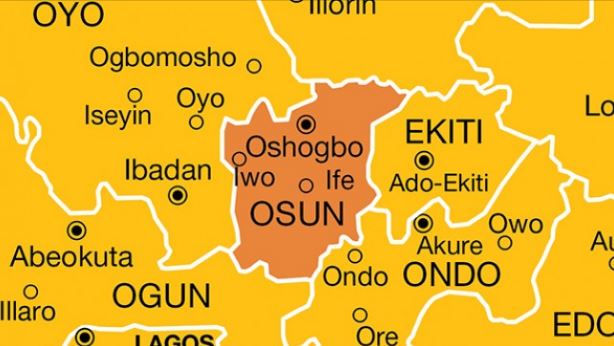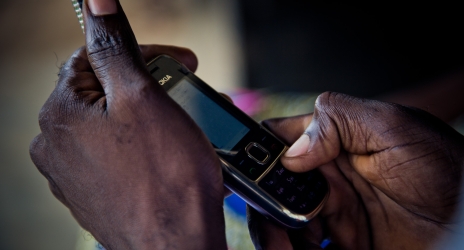The opening of the Oyan River Dam in Ogun state in October 2010 rendered a number of communities in Lagos state into flood crises. Nine years later, memories of the floods linger as parents and the new generation of students in Ajegunle community located along Ikorodu road, Lagos, are still feeling the effect of relocating the only public secondary school in the community to a distance of four kilometers. SOLOMON OLADIPUPO reports.
It’s 3:30pm but the hot afternoon would not deter them. As the school bell rang, students of Ajegunle Junior High School (AJHS) let out a wild scream, trooping out of the school’s fading brown gate in their cream and wine coloured uniforms; some caked in the red sand of the field, some bearing evidence of a playful day at school, others looking relatively immaculate.

As they dispersed from 6/8 Oladele street, off Orishigun street, Kosofe, Ketu, where the school is located, a group of students walked into Barbington street to turn at the road leading up to Ajelogo market road. Ahead is the Mile 12 bus-stop. Students of AJHS filled the space under the bridge. The reporter watched as the students slugged it out with one another to secure a space inside a “danfo” bus.

“Sometimes, all these danfos come here to pick us up. All these ones you see on the road, the Ajegunle they call is for N100 but the ones that pick us up from here is N50,” David Ikubomire, a year three student of AJHS, explained.
Advertisement
Another commercial bus arrived at the underbridge space but some students running after it couldn’t secure a space. The students walked on, familiar with the route that has become part of their lives. Every school day, for the students, comes with a long journey filled with anguish and pain.
THE DISRUPTIVE FLOOD
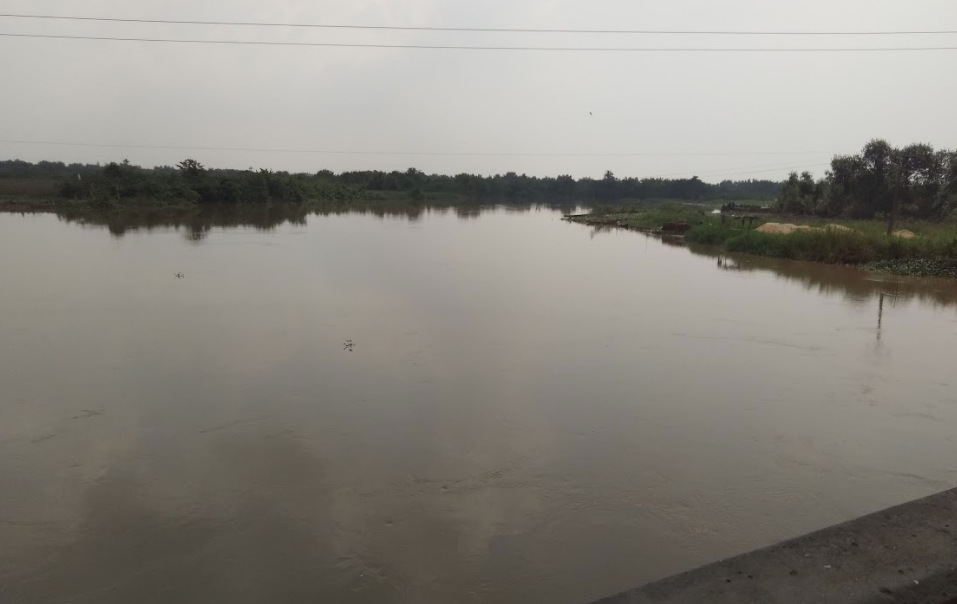
In October 2010, Ajegunle was hit by floods following the opening of the Oyan dam by the Osun/Ogun River Basin Development Authority (OORBDA). The release of excess water from the dam’s reservoir caused heavy flooding in a number of communities in the area. Among those affected were Odogun, Irawo, Ajegunle — displacing many and causing damage to properties.
Advertisement
When former President Goodluck Jonathan visited the area while in power, he promised the residents that the federal government would intervene in the flooding issue. Financial assistance totaling N17.6 billion was reportedly given to flood ravaged states, and some residents of the area were moved to the Agbowa displaced persons camp on the outskirts of Ikorodu.
At a press conference in 2013, Tunji Bello, Lagos commissioner for environment at the time, acknowledged that the state received N700 million from the federal government. The intervention fund was said to have emanated from the ecological fund and used to provide housing scheme for victims of the flood.

However, residents denied that the fund was used to rehabilitate flood victims in the area.
“It’s not possible that they used the money to rehabilitate the community and we will not know. I represent all the other baales (chiefs) and I speak for them,” Moyosola Oladunjoye, head of Ajegunle community, said.
Advertisement

Residents of the community who moved to the Agbowa camp said they were forced out after a 14-month stay. Some of them were said to have moved back to Ajegunle. The students have also not recovered from the effect of the flood.
“In 2010, we had the best student all over the federation. The place used to be okay. Even the school held its inter-house sports there. Everything was going on fine but all of a sudden the water released in 2010 destroyed everything,” Oladunjoye explained when this reporter visited the area.
PUPILS TREK 52 MINUTES TO SCHOOL

Chukwuma Solomon, a pupil of AJHS, narrated how he left home by 5am in order to get to school early when the first term examination for 2018/2019 academic session began.
Advertisement
“When I trek, it takes me about 40-45 minutes to get to school from Ajegunle to Mile 12, but we don’t used to reach here [the makeshift canteen] if we are trekking, we just go straight to school,” Solomon said.
AJHS and the senior school used to sit on College road, Off Zion street, Ajegunle, Ikorodu, until its relocation.
Advertisement

According to leaders of Ajegunle community development association (ACDA), the schools – which shared the same premises — were moved to the Mile 12 and Kosofe, Ketu, areas of Ketu, Lagos, respectively after the 2010 flood.
The flooding was said to have affected some blocks of classrooms within the premises of the school.
Advertisement
“And also more importantly, some of these blocks of classrooms are relatively old being the structure built by the then governor of Lagos state, Alhaji Lateef Kayode Jakande,” ACDA said in a 2015 letter.
In a correspondence dated December 11, 2015, and addressed to the chairman of the ACDA, the Lagos ministry of education explained that the schools were relocated because of “the perennial flooding of the schools’ premises (b) the non-conducive environment of the schools’ premises.”
Advertisement
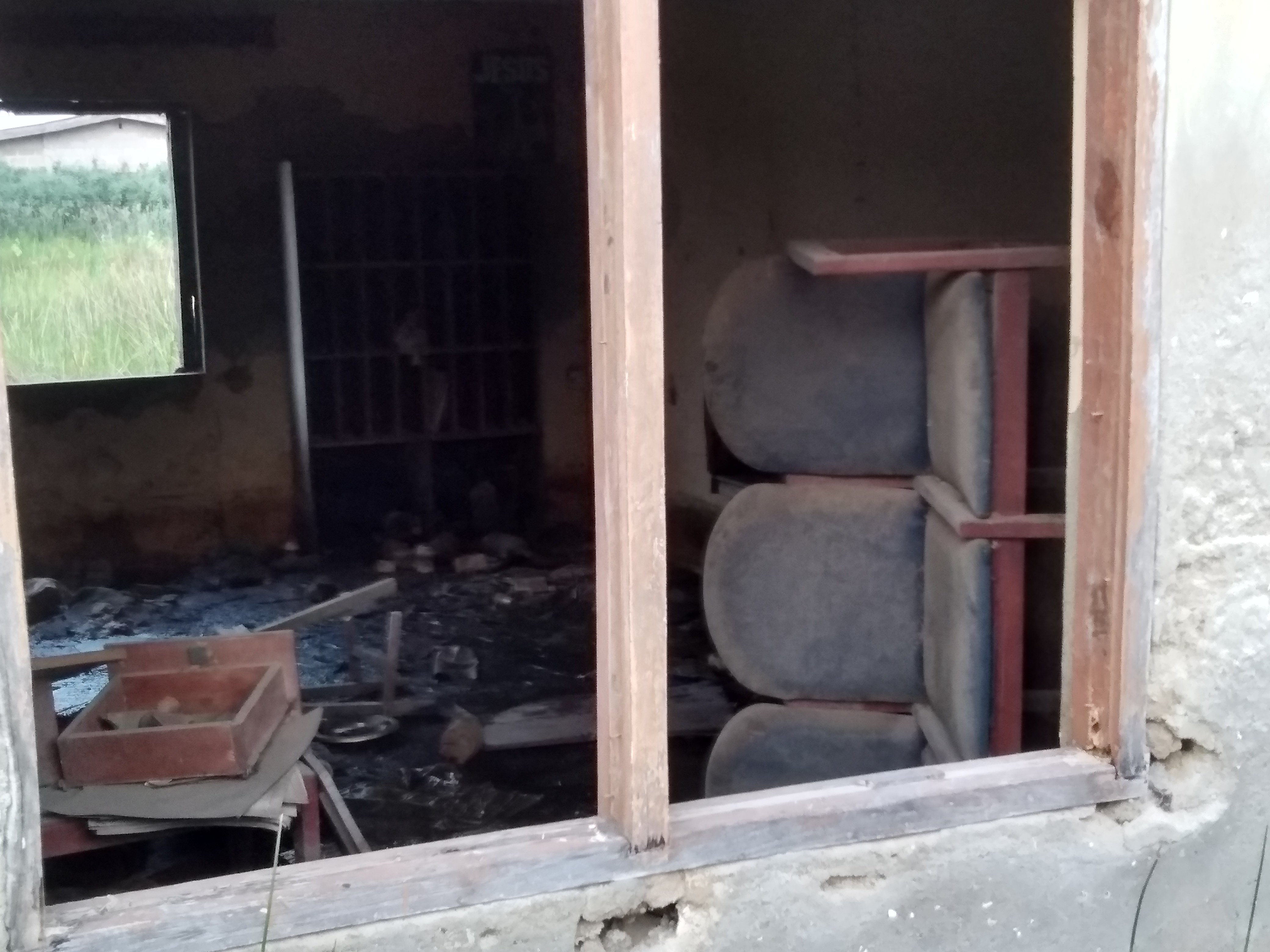
“When the school was here [in our community], there was no need for that. We were assured of the safety of our kids. But at Mile 12, a number of these children have fallen victims of road accidents,” Adebimpe Johnson said.
In various letters written to the government, community leaders listed the effects of the relocation on the students to include; poor academic performances, tiredness, consistent lateness to school, and financial burden to parents with two or more children attending the school.

“Safety and security of these young students particularly those recently moved from primary six to JSS 1 is of primary concern to their various parents whose children try to leave home around 5:00 to 5: 30am for school just to beat the traffic problems and also to get cheap transport fare in an area where there is perpetual darkness around this time,” one of the letters dated February 15, 2015, written by the community to Babatunde Fashola, who was the governor at the time.
PUTTING UP WITH A PRIMARY SCHOOL
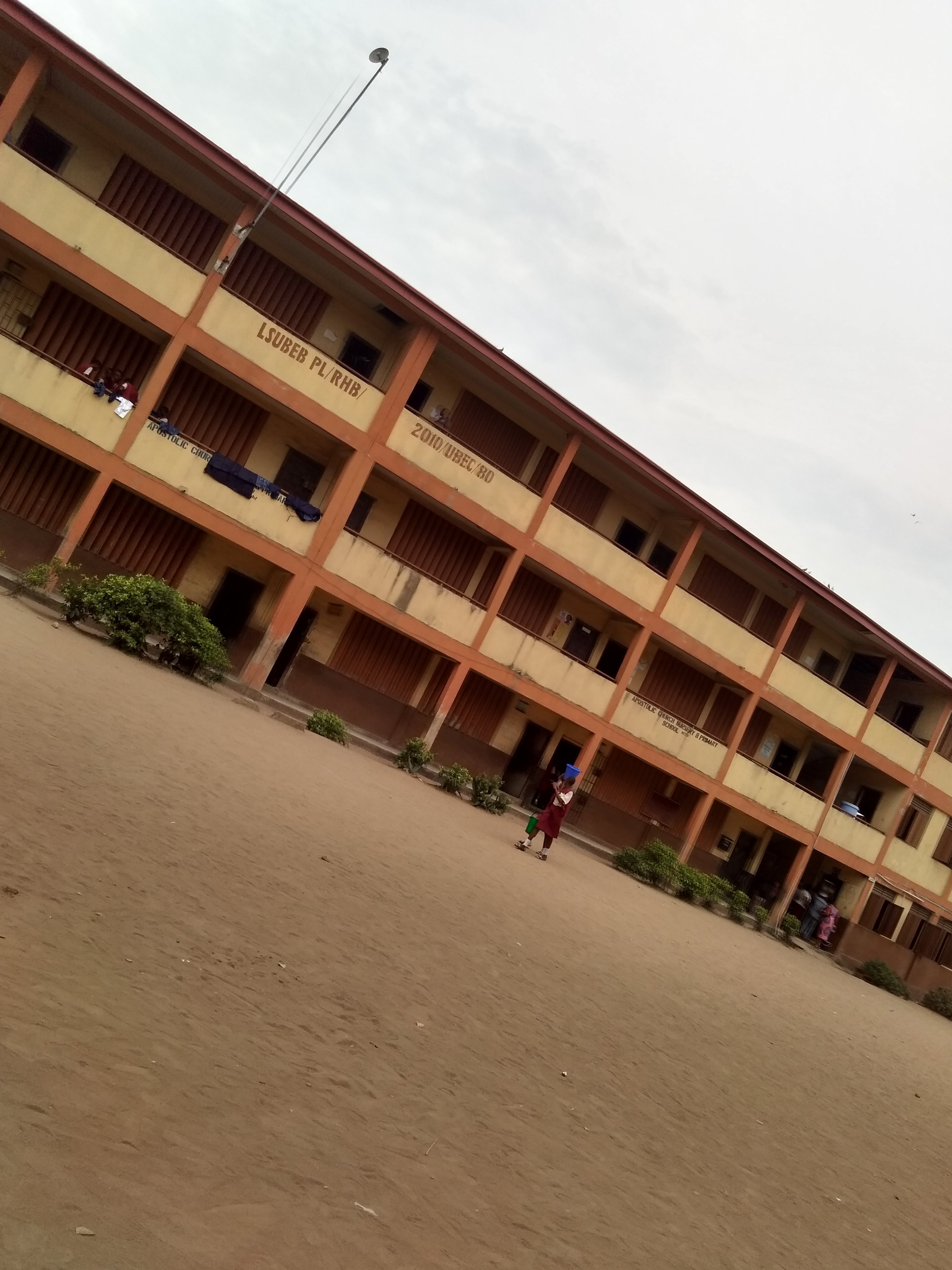
During a visit to the new location of AJHS in Kosofe, Ketu, this reporter gathered that year one students are cramped into a block of classrooms. Year two and three students, on the other hand, occupy the ground floor of the two-storey block of classrooms belonging to Apostolic Nursery and Primary School, Kosofe. They have been sharing classrooms with the primary schools students since the junior school was moved there in 2010.

The senior students say they are occupying a block of classrooms formerly owned by Baptist Nursery and Primary School – the school they share the premises with.
“Some of the primary school students still come to our class to pick some chairs that we sit on. And then later we just start looking for them. We are just squeezing ourselves together,” a senior student complained.
THE N3 MILLION ‘PALLIATIVE MEASURE’ AND THE PUSH FOR SCHOOLS BACK HOME

However, residents of Ajegunle have been making efforts to ensure the secondary schools are moved back.
“We wrote series of letters to the governor’s office, to the ministry of education, to the local government itself, to ensure that the school is relocated,” Olusegun Ilesanmi, secretary of the community association, said.
During a walk round the abandoned school structure, the reporter observed that most of the blocks of classrooms were already broken and class facilities destroyed. The walkways are barely visible, already choked by the giant weeds.

“The school was built to this point under the Eko Project,” Olayinka Akindele, chairman of Ajegunle concerned mothers group, said — pointing to a block of classroom filled with dirty water.
“Many of our students were attending; in fact, in a certain year a student here, Remilekun Shittu, was awarded for being the best student in Lagos state. At that time students here come out as the best; but now, it’s no longer like that.”
Efforts to return the school made headway in August 2015 when the community held a joint meeting with the government stakeholders, including the high level management staff of the ministry of education, reportedly in attendance.
In correspondences between the community and the Lagos state government, it was agreed at the said meeting that the community carry out certain “palliative measures.”
“What we were told then was that we should go and put in our efforts that it is the child that shows readiness that the mother carries. We came back home and started levying all communities. At every meeting we held, we paid N500 each. We initially did a launching campaign where we the elders in the CDA raised a very good amount of money to start with.” a man who identified himself as Ilesanmi said.
“After the meeting was held and we all agreed on the palliative measures, I came home to quickly convey a well attended town hall meeting of where I personally briefed the residents of my community and other neighboring communities that were in attendance and they were happy on hearing that the placement of the new students into JSS 1 would be done at the school in Ajegunle, our community, at the beginning of the 2015/2016 school session.
“We spent over N3 million. After all these, they came for inspection, yet they refused to relocate the school. They told us they have heard but till today, there’s been nothing like that [relocation of the school to Ajegunle Community]; even when we took different pictures and wrote series of letters to them.”
‘GOVERNMENT IS THINKING BIGGER’

Ajegunle community is under ward G of Agboyi Ketu local community development area (LCDA). During a visit to the education and library services department, the reporter was requested to obtain permission from the Kosofe local government education authority (LGEA) before he could get audience.
At the Kosofe LGEA, the education secretary when acquainted with the reporter’s essence of visit, asked him to meet the tutor-general of education district II, who later referred the reporter to the state’s ministry of education.
Adesegun Ogundeji, assistant director of public affairs at the ministry, explained that the movement of the school was to protect lives and properties. Ogundeji said it would have amounted to neglect if the government had left the school to grapple with flooding.
According to him, a lot of engineering works like soil tests is being done “to determine the type of structure than can endure on that property.”
”If you go anywhere now, you will see the kind of school structure that we are building. it is either we are building 17 plus one or we are building the new e-structure that has I think 25 classrooms,” Ogundeji said.
“So that is the level that we’re going now. There is no land in Lagos; we can’t continue to [build] six plot of whatever in a community like Ajegunle that its population is growing geometrically.
“All the studies must be complete, recommendations must be approved, and then budget done and project commenced. They have reasons to be agitated but they should stem their fears because there is nothing that would happen to the land other than a better school structure that a community and its generations after would been proud of.”
On the less conducive learning environment in the new school, Ogundeji noted that there were lots of schools in Lagos state that needed and deserved the government’s attention.
“Is it not better from where they left? It’s not conducive, how? That they now take a one-drop transport from Ajegunle to Mile 12; does that make it not conducive?
“There are so many communities where students travel five bus stops for access [to education]. Nothing comes for free.”
He added that the construction and completion of the Ikorodu road was part of efforts to abate flooding in the area.
As there seems to be no help on the way, the likes of Solomon and his friends would have to leave home as usual before 6 o’ clock in the morning in order to beat traffic and get to school.
And for those pupils who cannot afford the transport fare or who would have to walk for some other reasons, the four kilometer trek is their must-take routine to acquire education.
This report is supported by the Regulators’ Monitoring Programme of the Wole Soyinka Centre for Investigative Journalism (WSCIJ).
